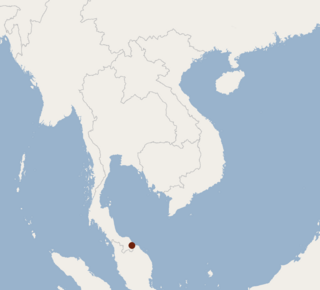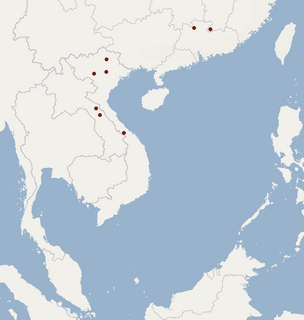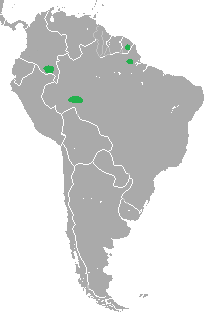 W
WThe Bala tube-nosed bat is a critically endangered species of bat found in Thailand.
 W
WCrocidura sapaensis is a species of white-toothed shrew native to northern Vietnam. It was first described in 2013 and its specific name derives from the Sa Pa where it was discovered.
 W
WThe eastern caenolestid is a shrew opossum found on the eastern slopes of the Andes in southern Ecuador.
 W
WThe Kayan River slow loris is a strepsirrhine primate and a species of slow loris that is native to the northern and central highland region of the island of Borneo. The species was originally thought to be a part of the Bornean slow loris (N. menagensis) population until 2013, when a study of museum specimens and photographs identified distinct facial markings, which helped to differentiate it. It is distinguished by the high contrast of its black and white facial features, as well as the shape and width of the stripes of its facial markings.
 W
WPeracchi's nectar bat is a species of nectar-feeding bat in the family Phyllostomidae. It was first described from the Atlantic Forest in southeastern Brazil.
 W
WThe Marohita mouse lemur is a species of mouse lemur known only from the Marohita Forest in eastern Madagascar, near the village of Marolambo. Specimens were first collected in December 2003, and its discovery was announced in 2013 along with the Anosy mouse lemur. It is a large mouse lemur, weighing up to 89 g (3.1 oz), and lives within the same area as the Goodman's mouse lemur (M. lehilahytsara), Simmons' mouse lemur (M. simmonsi), and the brown mouse lemur (M. rufus), all four of which are nearly identical in appearance. Its fur is rufous on its back and grayish-beige on its underside. Nothing is known about its behavior. Its conservation status was evaluated as Endangered by the International Union for Conservation of Nature (IUCN) in 2012, before it was formally described, because its only known habitat had severely degraded between 2003 and 2012.
 W
WMyotis indochinensis, commonly known as the Indochinese mouse-eared bat, is a species of cave-dwelling bat in the family Vespertilionidae. It is found in Vietnam and China.
 W
WThe olinguito is a mammal of the raccoon family Procyonidae that lives in montane forests in the Andes of western Colombia and Ecuador. The species was described as new in 2013. The specific name neblina is Spanish for fog or mist, referring to the cloud forest habitat of the olinguito.
 W
WTapirus kabomani is a partially-recognized species of tapir, large browsing mammals similar in shape to a pig. It is the smallest tapir species, even smaller than the mountain tapir, which had been considered the smallest. T. kabomani is found in the Amazon rainforest, where it appears to be sympatric with the South American tapir. When it was announced in December 2013, T. kabomani was the first odd-toed ungulate discovered in over 100 years. T. kabomani has not been recognized by the Tapir Specialist Group as a distinct species and recent genetic evidence further suggests it is actually nested within T. terrestris.
 W
WYates's big-eared bat is a species of leaf-nosed bat found in Bolivia.